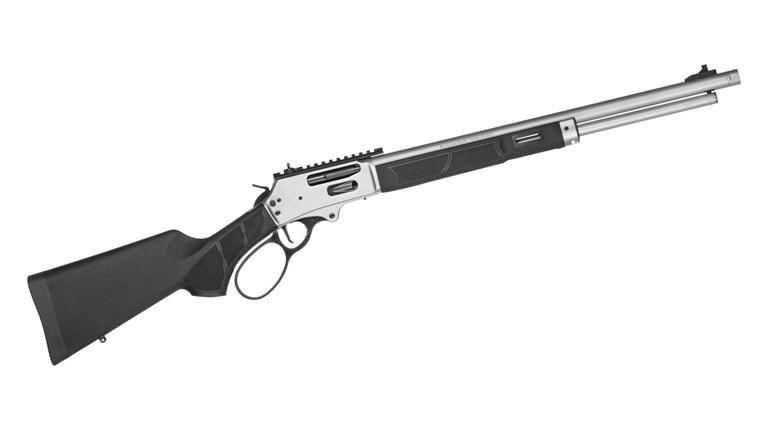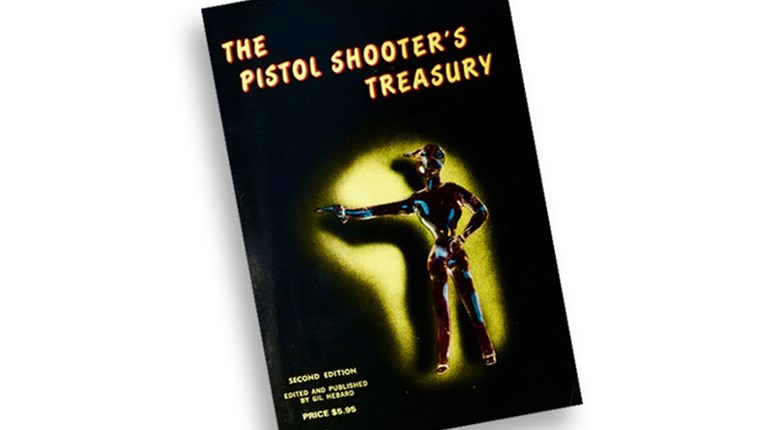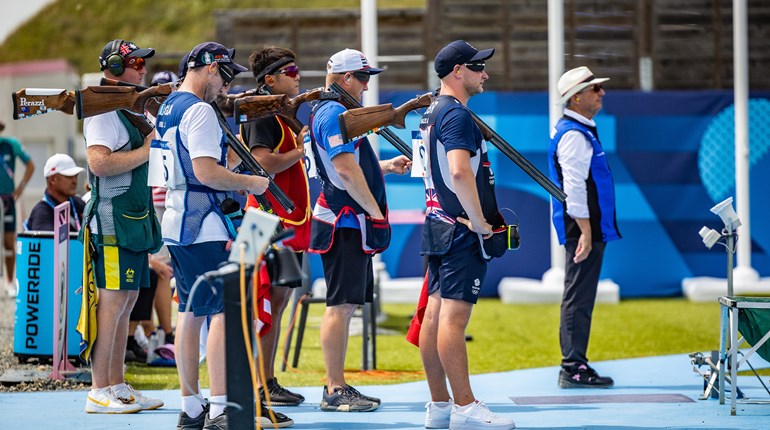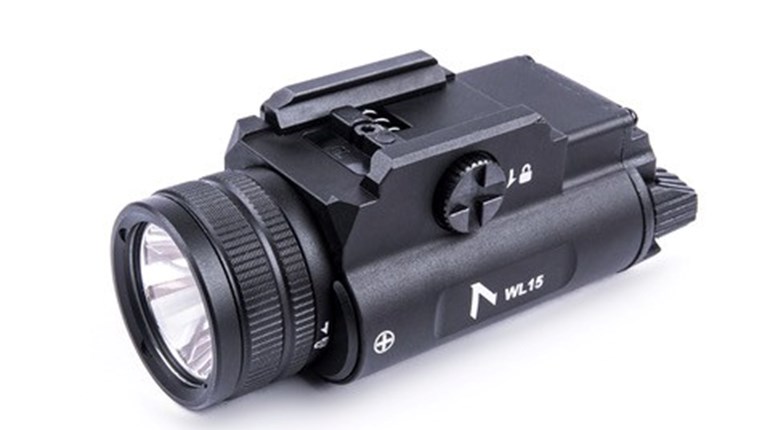
This is written with the hope that it will help keep riflemen generally to make better offhand scores; it is based upon many years of shooting and as many years' association with the best offhand shooters that this country has ever produced, as well as my long experience in rifle making, and may help others to ultimate victory.
The Offhand Position
This will vary somewhat with individuals, but it must be perfectly natural, easy and free from muscular strain. The weight should be evenly distributed on both legs; they should be straight and not too far apart. Legs spread too far means muscular strain, while in a proper position the bones should carry the weight. As the writer stands, the feet are at an angle of about 60 degrees, the left foot about 50 degrees with the line of fire, the right a little back or square to the line of fire, the heels 7-inches apart. Don't straddle.
In getting into shooting position, it is extremely important that one gets so set that a natural easy position directs the rifle at the bullseye; therefore in aiming let the rifle come to its natural position; then if, looking over the sights, it is right or left, rock backward, letting the left leg hand, swing the body so the rifle will point at the bull, then rock forward, letting the right leg hand down naturally, and you will now find that the rifle points itself at the bull merely by assuming a perfectly easy position without muscular strain. If not properly set, of course, one can direct the rifle to a considerable angle at either side, but when the nerves relax control of the strained muscles to the slightest degree the muscles assume a natural position and the rifle swings off. A little practice lets one get set at the proper angle, so very little of this setting is usually necessary.
Aiming and Pulling
In a match of considerable length one should never try to pull every shot dead center. It can't be done, and to try to do so only results in fatigue and wild shooting. No matter how expert, one practically never holds perfectly still; there is always a swing or tremor. Don't outhold your wind. Try to pull the first time the sights swing slowly into a position that you can pull cleanly, to score slightly above your average score. In doing this you avoid wild shots, and many times you get practically on center.
A good score is not made by a large number of perfect shots, but by the absence of poor ones. It does not pay to try to pull centers, unless nothing else will do in a tight place; then be careful. If the sights will not settle before you begin to feel short of breath, put the rifle down and breathe very slowly and deeply two or three times; swallow your guts and try again. Be sure you pull on a slow swing and with a perfectly clean pull.
The trigger should not be extremely tight, but should be perfectly clean and without kick to the finger when it lets go. The trigger guard or lever should bring the trigger finger into such a position that a long forward reach is not necessary. The thumb should be along the side of the stock—not over it; in fact, it should form a gauge to keep the trigger finger in such a position that it comes naturally onto the trigger. This position you must learn to shoot well; the finger cannot be away from the trigger when you want to fire, but in contact with it. The best way when aiming is to keep squeezing the trigger with the finger, then when the sight swings deep into the bull, a little harder touch lets it off. The object of doing this is to avoid sympathetic movements of the other fingers. It is very hard to make a quick movement of one finger without also moving the adjacent fingers more or less, which movement disturbs the aim.
In aiming the rifle (NRA standing position), the left arm should be along the side, the elbow resting on the hip bone if you are so built; if not, then along the side on the short ribs—not in front over the heart and stomach, which cramps the breathing and heart action. Regardless of position, NRA or Army, the right arm should have the elbow well up, not against the side; this pulls the chest open and gives the lungs more capacity; it also allows a straighter stock, and a rifle with straight stock shoots more uniformly than one with much drop.
Breathing
It is extremely important that you pay careful attention to this . One should breathe slowly and deeply. Do not allow yourself to breathe fast, as that tends to make the pulse rapid, which in turn affects the aim. If one is shooting continuous scores with fixed ammunition, one is apt to get short of breath before the score is finished and the pulse goes up. This is because the blood is robbed of the necessary oxygen when holding the breath. We compensate for this by deep slow breathing, making the whole surface of the lungs work instead of the small portion in ordinary use. As I raise my rifle to aim, I lift it high and fill my lungs fully; as I begin to settle I breathe nearly empty, then as the aim begins to settle, breathe about half full and hold the breath till I fire; then at once being breathing again deeply and slowly.


































